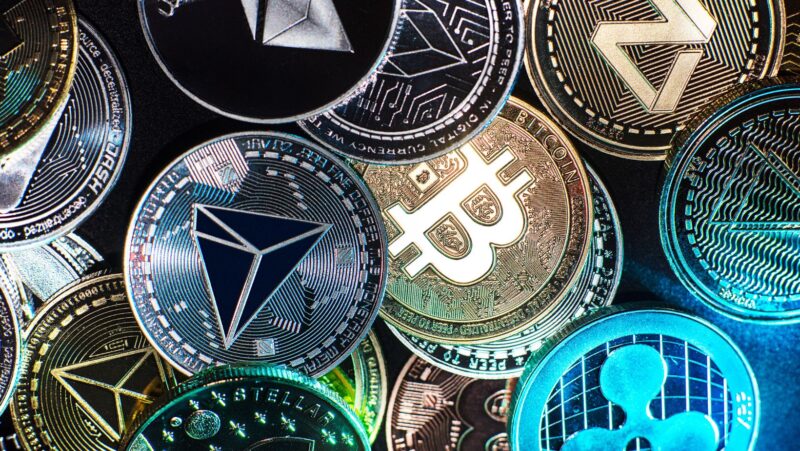
In a world of mobile wallets, instant transfers, and cryptocurrency, it might seem surprising that the trend of prepaid cards is on the rise again. Yet, as the digital economy grows increasingly complex, the simplicity, security, and control provided by a prepaid card have become very appealing to consumers.
From being fundamentally a no-frills financial tool for the unbanked and underbanked, prepaid cards have emerged as intelligent, multi-application solutions to modern digital lifestyles. Today, they bridge the gap from convenience to privacy-a haven of reliability in these times of data tracking, cyber risks, and overexposure to credit systems.
The Return of Financial Control
One of the main reasons prepaid cards are making a comeback is their ability to offer clear, tangible control over spending. In an era when digital payments and subscriptions can accumulate invisibly, consumers are seeking ways to regain a sense of balance and budgeting discipline.
Unlike credit cards, which are based on postponed payments, the principle of prepaid cards is to pay beforehand. This means that users can only spend what they have loaded onto the card, an approach that naturally limits overspending and financial anxiety.
The simplicity of this model has resonated particularly with younger consumers, especially of Generation Z, who value financial independence but mostly distrust debt-based systems. In a similar vein, we see digital nomads and freelancers leveraging prepaid cards as a way of handling multiple currencies, avoiding transaction fees, and streamlining their personal and business expenses.
While cash is largely disappearing from everyday commerce, prepaid cards represent a more organized option that combines the utility of digital payments with the thoughtfulness of budgeting.
Privacy and Security in the Age of Oversharing
In today’s digital economy, data security and privacy have become defining themes. Every transaction online leaves footprints behind. Coupled with the ever-increasing growth of cybercrime, many users choose payment options that minimize personal exposure.
Prepaid cards, particularly the more digital-friendly versions, allow consumers to purchase products without linking their main bank accounts and without compromising sensitive information. To online gamers and shoppers, this layer of anonymity adds an element of safety and a level of comfort.
The gaming and entertainment industries have not been late to the party. Product adoption flows naturally in prepaid systems with platforms like paysafecard in the casino networks, as an excellent example of how privacy-directed payments can dovetail with use cases focused on using technology. For players, this means instant deposits with no need to disclose bank information, hence minimizing the risk of fraud without compromising convenience.
For businesses, this rising demand for privacy-friendly payments reflects a wider trend: consumers no longer grant businesses a default position of trust-it’s something they have to earn. Companies that offer flexible and secure payment options gain that competitive advantage by aligning with their users’ need for safety and discretion.
Accessibility and Economic Inclusion
Likewise, prepaid cards are a vital tool for economic inclusion. Millions of people around the world have no traditional banking channels due to credit restrictions, residency requirements, or other socioeconomic factors. Prepaid systems mitigate many of these issues and provide any user with access to the digital economy.
For example, prepaid cards allow users to participate in e-commerce, digital entertainment, and global transactions without going through complicated registration or credit checks. They can be especially valuable for anyone who wants control over their online spending for whatever reason, whether that is parents managing a teenager’s allowance or a tourist looking for affordable options while paying overseas.
These prepaid cards are superlative substitutes for cash in areas with underdeveloped banking conditions and will facilitate small businesses while allowing for safer transaction methods, particularly if the card owner’s information can be hidden from third parties. Their versatility also extends to one-off purchases, travel budgets, and cross-border payments-use cases that traditional financial institutions have struggled to address efficiently.
Further, prepaid systems concretize the modern trend of frictionless, inclusive finance. They are an important step toward democratizing digital participation since they are much easier to access and do not require formal accounts.
The Hybrid Future: Convenience Meets Responsibility
The resurgence of prepaid cards is not an issue of nostalgia but one of adaptability. Modern prepaid systems now smoothly integrate with digital wallets, apps, and online accounts, offering their users the best of both worlds: the speed and convenience of digital, along with the clarity and control of physical budgeting.
For instance, Internet platforms that do not restrain users and promise more freedom-for example, an online casino without cruks-will increasingly deploy the options for prepaid and instant payments to serve international audiences. Such systems enable players to play safely and responsibly, with clear spending limits set and minimum friction.

It is the same with the broad e-commerce and subscription ecosystems: companies increasingly use hybrid payment strategies, including prepaid options, to satisfy their customers who want either fixed budgets or value-added anonymity. By doing so, they make digital environments more inclusive and appealing to cautious spenders and technology-savvy consumers alike.
Prepaid models will be sustainable in a time when regulatory scrutiny is tightening day by day around online payments and data protection. Their transparency corresponds to regulations, and their simplicity resonates with consumer markets that are tired of financial layers and complexity.
Environmental and Ethical Changes
Another interesting element to the resurgence of prepaid cards is the transformation of consumer values. Many current prepaid offerings are now virtual or constructed from eco-friendly/sustainable materials, reducing the footprint of typical bank plastic cards.
Fully digitized prepaid cards do away with all physical waste, and are capitalizing on an increased demand for sustainable and paperless banking solutions. From an ecological standpoint, this appeals to younger consumers, who are often at the helm of demand for responsible financial products that support their ethical and environmentally based values.
Also, some prepaid systems are collaborating with charities or social impact organizations in order to facilitate rounding up purchases or allocation of a portion of their balance toward causes they value. This blend of practicality and purpose enhances the appeal of prepaid cards as tools for conscious consumption.
Why the Comeback Is Here to Stay
This development does not signal a transient phenomenon but rather a response to deeper changes in consumer behavior: today, when financial freedom, privacy, and security are more in demand than ever, prepaid systems offer a balance of control and convenience.
They enable users to remain independent financially without giving up digital accessibility. They also empower the underserved by traditional banks, and they cater to a new generation of consumers that prefer clear limits over open credit.
As technology continues to evolve, it will find prepaid cards integral to the payment landscape: seamlessly merged with mobile apps, digital currencies, and new forms of online identity verification.
Their comeback speaks for something more than just nostalgia for a simpler era; it’s a reaffirmation of financial values that put autonomy, transparency, and trust. In today’s digital age, where each transaction narrates a story, the prepaid card reminds us that often the smartest move is the simplest one.







